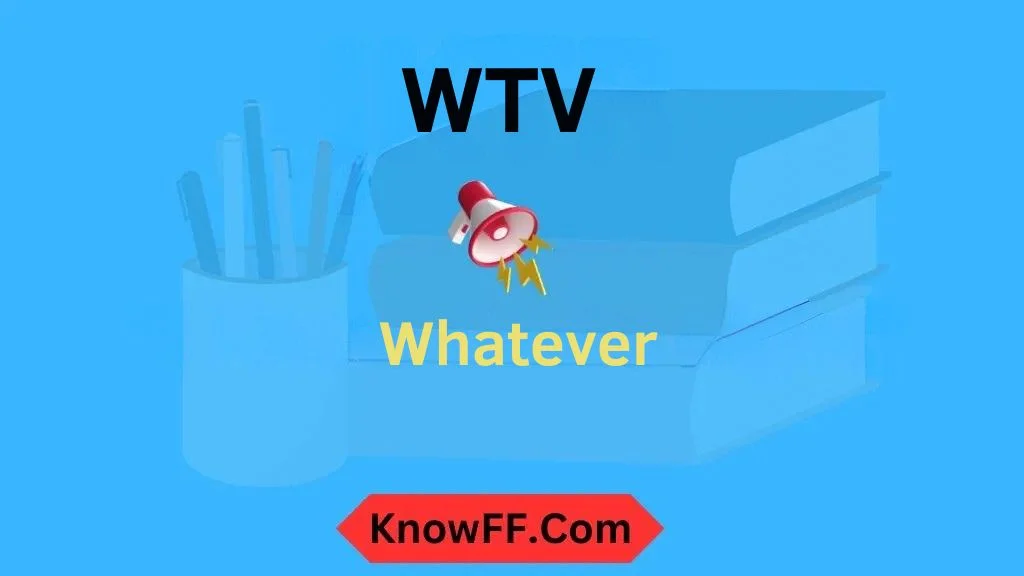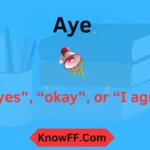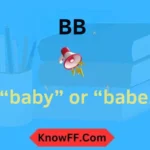The abbreviation “WTV” is one of the most frequently used slang terms in digital communication today.
Many people come across it in a text message, social media comment, or even in a meme and wonder what it truly means.
Understanding this short form is essential because it reflects the fast-paced and casual style of modern online conversations.
Whether you are chatting with friends, messaging colleagues, or decoding comments on platforms like Instagram and TikTok, knowing what WTV stands for can help you communicate more effectively.
This article explores the meaning of WTV in text messages, its origin, how it’s used across various platforms, its occasional appearance in professional and technical fields, and how it differs from similar terms.
By the end, you will be equipped to understand and respond appropriately whenever you encounter “WTV” in your conversations.
Meaning & Definition
In everyday texting, WTV is an abbreviation for “Whatever.” It is often used to express indifference, acceptance, or dismissal in a casual way. For example, if someone asks what you want for dinner and you reply with “WTV,” it suggests that you have no particular preference.
The term is concise and reflects the laid-back, fast-typing nature of digital communication. While it can sometimes sound dismissive depending on the tone and context, it is usually harmless and simply a way to save time when typing on a phone or other device.
Background
The usage of abbreviations like WTV grew alongside the rise of SMS texting in the late 1990s and early 2000s. When mobile phones had character limits for messages and slower typing methods, people naturally adopted shorthand to communicate faster.
As internet culture evolved, so did slang terms. WTV migrated from SMS to instant messaging platforms, and eventually into modern social media networks. Today, it is common not only in casual chats but also in memes, captions, and even informal emails, making it a staple of online lingo.
Usage in Different Contexts
While WTV is most commonly used in texting, its meaning can slightly shift based on context:
- Casual Chats: Used to express indifference or agreement without strong feelings.
Example: “We can meet at 5 or 6 — WTV works for me.” - Social Media: Appears in comments, captions, or stories to show a relaxed attitude or a sense of humor.
Example: “Late for the party again… WTV 😎” - Professional Messaging: Rarely used in formal work settings but may appear in informal group chats among colleagues.
In all contexts, tone is key. While WTV is often neutral, in some conversations it may come across as dismissive or even slightly rude, especially in professional or sensitive discussions.
Meaning in Chat, WhatsApp, Instagram, TikTok
On popular platforms like WhatsApp, Instagram, TikTok, and Snapchat, WTV retains its primary meaning of “Whatever.”
- WhatsApp: Often used in group chats to end a discussion or show a lack of preference.
- Instagram: Appears in captions or comments to show nonchalance.
- TikTok: Common in video captions or comments, usually paired with emojis for a playful tone.
- Snapchat: Frequently appears in streaks or quick messages due to its brevity.
The tone and relationship between users influence how WTV is perceived—friendly among close friends, but potentially curt with strangers.
Meaning in Physics, Medical, and Aircraft Terminology
Although WTV is widely recognized as slang for “Whatever”, it has technical meanings in specialized fields:
- Physics: Sometimes used informally to denote “Weight” or “Wave Transmission Voltage” in certain academic contexts, though this is uncommon in everyday communication.
- Medical: May appear as shorthand in notes for “Weight” (WtV), though professionals usually prefer standardized abbreviations.
- Aircraft/Engineering: In aviation, WTV can refer to “Wind Tunnel Validation” or similar project-based terms, specific to technical documentation.
These specialized uses are rare outside professional environments and should not be confused with the texting slang.
Common Misconceptions
A frequent misconception is that WTV always conveys annoyance or sarcasm. While it can sound dismissive in some contexts, most often it simply means “whatever” without negative intent.
Another misunderstanding is assuming that WTV is a recent trend. In reality, it has been in use for decades, dating back to early text messaging and internet chatrooms.
Similar Terms & Alternatives
There are several alternatives to WTV that convey similar meanings:
- IDC – I Don’t Care
- IDK – I Don’t Know
- NM – Not Much
- OK or K – A brief acknowledgment
- NP – No Problem
These terms vary slightly in tone. For instance, “IDC” expresses stronger indifference than “WTV,” while “OK” is more neutral.
How to Respond to It
Your response to WTV depends on the context and tone:
- Friendly/Neutral Context: Respond with a choice or lighthearted comment.
Example: “Haha okay, let’s go for pizza then!” - Dismissive Context: If it feels curt or dismissive, you might want to clarify.
Example: “You sure? I just want to make sure you’re okay with it.”
Understanding the intent behind the abbreviation helps avoid misunderstandings in text conversations.
Differences from Similar Words
While WTV often overlaps with phrases like “IDC” or “OK,” it carries a subtler meaning. “IDC” conveys a more direct lack of interest, while “WTV” often suggests flexible acceptance or casual indifference.
Additionally, WTV is more versatile and less emotionally charged, making it suitable for both casual and playful exchanges.
Relevance in Online Conversations & Dating Apps
In the world of online dating apps and digital conversations, WTV often reflects a laid-back personality. It can help ease communication by avoiding overthinking and signaling that the person is flexible about plans or decisions.
However, overusing it in dating contexts may come across as uninterested or unengaged, so it’s best to balance it with more expressive responses when building new connections.
FAQs
What does WTV mean in texting?
WTV stands for “Whatever,” typically expressing casual indifference or flexibility in a conversation.
Is WTV rude to use in chat?
Not necessarily. Tone matters. Among friends, it’s often seen as neutral, but it can feel dismissive in formal or sensitive conversations.
When did WTV become popular?
WTV gained popularity during the early days of SMS texting in the late 1990s and spread widely with social media.
Can WTV mean something else in professional contexts?
Yes. In specialized fields like physics or aviation, it can have technical meanings, but this is rare in general communication.
How should I respond to WTV in a message?
Respond casually by making a choice or confirming plans, unless it feels dismissive—then it’s okay to ask for clarity.
Is WTV the same as IDC?
No. WTV suggests flexible acceptance, while IDC expresses stronger disinterest or apathy.
Conclusion
The abbreviation WTV in text messages has become an integral part of online and mobile communication, simplifying conversations and reflecting the easygoing tone of modern interaction.
While primarily meaning “whatever,” it can take on different shades of meaning depending on the context, tone, and relationship between the people communicating.
By understanding its origins, contexts of use, and differences from similar terms, you can interpret and respond to it more effectively.
Whether in casual chats, social media posts, or even niche professional settings, knowing what WTV means helps you stay connected and communicate clearly in today’s fast-paced digital world.











